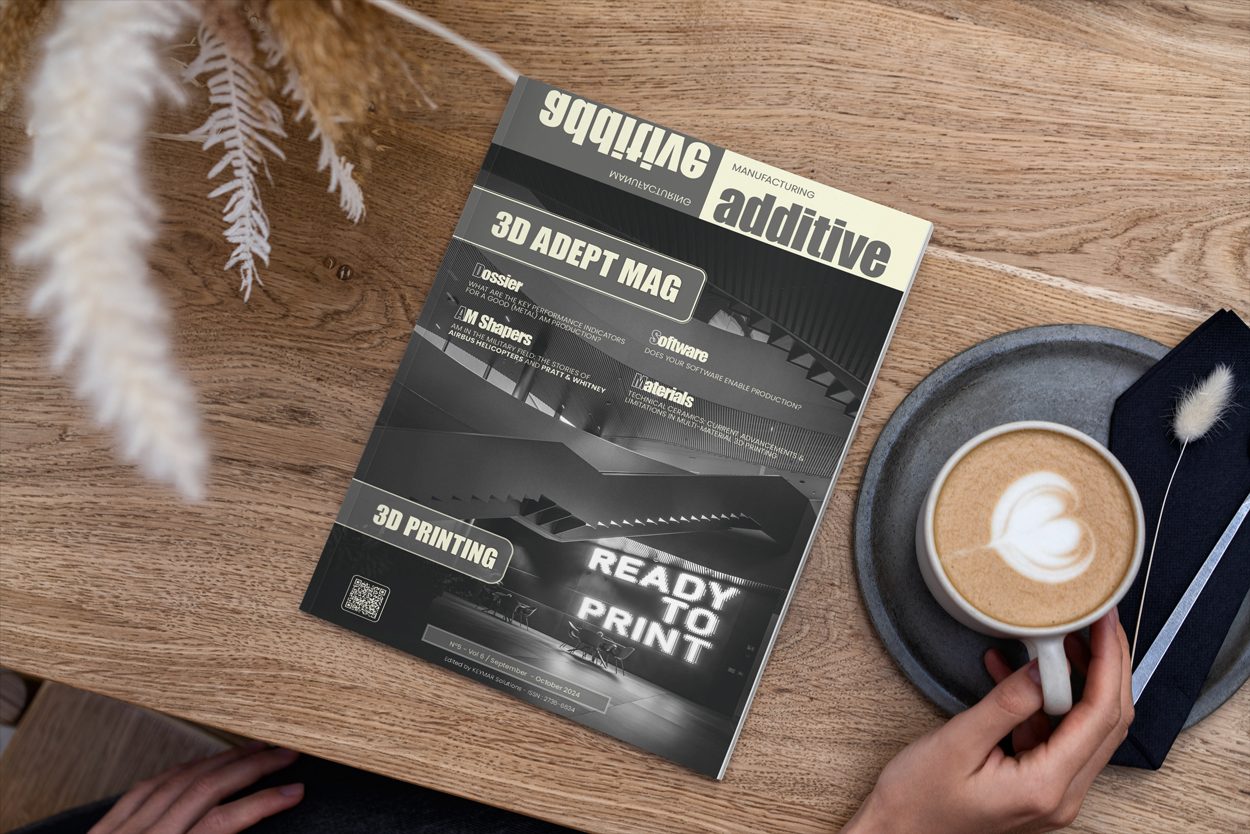
Download the September / October 2024 edition of 3D ADEPT Mag
Are you familiar with the “job to be done” theory? This theory of innovation is based on the economic principle that people buy products and services to get “jobs” done, i.e., to help them accomplish tasks, achieve goals and objectives, resolve and avoid problems, and to make progress in their lives.
This means that when we purchase a product (understand “solution”), we’re essentially “hiring” it to perform a specific task. If it does the job well, we’re likely to choose it again the next time we face the same task. But if it fails to meet our expectations, we “fire” it and search for a better option. Interestingly, this theory can be applied to everything.
While this theory of innovation may be obvious to apply by AM technologies’ providers, we’ve tried to understand what it may look like for AM users. For the military field for example, a sector where it has always been difficult to discuss the use of AM applications – for obvious reasons, one realizes that most companies in this field have limited the use of AM to one or two applications – mostly spare parts.
In this edition of 3D ADEPT Mag, the stories of Pratt & Whitney as well as Airbus Helicopters reveal how they have found other “jobs to be done” to leverage the technological advantages AM can bring to the military field.
These stories as well as other dossiers all aim to help you answer one single question: What jobs do you need AM to do?
Exclusive features
Subscribe to download the 2024 September / October edition of 3D ADEPT Mag
"*" indicates required fields
Dossier | What are the key performance indicators for a good (metal) AM production?
As we evolve in a context where attention is shifting to higher-volume applications such as mass customization and the fabrication of standard parts, production losses due to process variability and inefficient machine use may be common concerns – leading AM users to ask themselves a million-dollar question: what are the key performance indicators for a “good” (metal) AM production? With insights from AIM3D GmbH, Nikon AM Synergy Inc. and Titomic.
Software | Does your software enable production?
As we prepare for Formnext 2024, we can’t help but recall that last year at Formnext 2023, most AM users looking to achieve production with AM, continuously asked software companies the same question: “Does your software enable production?” – A difficult yet pivotal question when one realizes that the AM software landscape is complex and often not well understood. With contributions from trinckle GmbH, Phase3D, Formware, RWTH Aachen University – Digital Additive Production (DAP) Chair.
Technical ceramics: Current advancements & limitations in multi-material 3D printing.
In the wide range of manufacturing techniques that exist, multi-material 3D printing happens to be one technique that provides the ability to incorporate multiple material constituents without an intricate process or expensive tools. The question is, with the wide manufacturing landscape of ceramic 3D printing, what AM processes are ready to deliver commercial-ready applications?
Dr. Uwe Scheithauer, Group Manager, Additive and Hybrid Manufacturing at Fraunhofer-Institut für Keramische Technologien und Systeme IKTS, Stefan Waldner from D3-AM GmbH. D3-AM GmbH is a spin-off of the Durst Group, as well as the team at 3DCeram took part in this dossier.
Exclusive Insights
Solukon highlights new dimensions of depowdering with its SFM-AT1500-S system
ECKART TLS broadens its Metal Powder portfolio for AM
New developments in 3D printing polymers: Encapsulated carbon black particles for Selective Laser Sintering
Event | Formnext 2024
Innovations, trends, and potentials of Additive Manufacturing
AM Shapers | Pratt & Whitney on the evolutionary journey that leads to the development of military engines with Additive Manufacturing
Many military aircraft, especially fighters, require engines with significant differences from commercial aircraft. They fly different flight profiles and perform various jobs. These differences continuously lead engine manufacturers to reassess priority and resources at the manufacturing level. Interestingly, with the wide range of technologies that can be leveraged to deliver the desired performance, Additive Manufacturing remains a technology of choice as it serves different purposes. A conversation with Pratt & Whitney’s Jesse Boyer sheds light on these purposes.
Frank Rethmann on Airbus Helicopters’ AM journey: “Since 2017, we have produced more than 13500 shafts [using titanium 3D printing].”
To be a consistent force to be reckoned with when it comes to defending a nation from the skies, helicopter manufacturers must also stay at the forefront of the technology. It takes a conversation with Frank Rethmann to understand what this journey looks like for Airbus Helicopters.
Interview of the Month | Going through Arkema’s ESG and sustainability journey in Additive Manufacturing
Last year, in the sustainability edition of 3D ADEPT Mag, we shed light on the fact that sustainability goes hand in hand with ESG – an acronym which stands for Environmental, Social and Governance; a framework used to assess an organization’s business practices and performance on various sustainability and ethical issues. While all AM solutions providers are concerned, material producers are among the first companies that are leading the way in this journey – for obvious reasons. In the short list of material producers that have taken the leap in this journey, there is Arkema.
Focus | Moving toward industrialization with 3DCeram’s Ceramic 3D printing
“Better, faster, cheaper.” Three words that every manufacturer is looking to use when qualifying their production on an industrial scale – and this, no matter what Additive Manufacturing processes they leverage. The thing is, the quest for industrialization seems obvious when using certain AM technologies while others do not always get the credit they deserve. In the wide array of AM processes that are gaining in popularity, a conversation with 3DCeram sheds light on the possibilities that stereolithography (SLA) offers to achieve production on an industrial scale.



